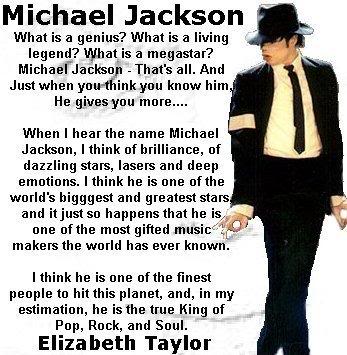A RETROSPECTIVE OF LIFE ON THE ROAD WITH MICHAEL JACKSON by Bryan Matthews>
World-renowned singer, songwriter Michael Jackson was born in Gary, Indiana, on August 29, 1958. During his life, he sold millions of albums worldwide as a member of The Jackson 5 and as arguably the most prolific solo artist in music history. His life was filled with many hardships, trials, and controversies, but behind the public persona and the tabloid headlines, Michael Jackson was a performer. He was the consummate performer who understood exactly how to put on a show and bring a crowd of thousands to their feet.
Behind the scenes, production crews often got to experience what life with Michael Jackson was really all about. As a salute to one of the greatest musical artist of all time, Philips Vari-Lite contacted four lighting professionals to share with us what life on a Michael Jackson tour meant to them. Peter Morse, Jim Waits, Benny Kirkham, and Gregg Brooks may have had varying responsibilities while working with Michael Jackson, but they all share one thing; a unique perspective on the King of Pop.
How I Got Started On Tour with Michael Jackson Every lighting designer, programmer, and technician can remember where and how they got that special gig. When offered a chance to work with the largest selling artist of the decade, not many would decline especially when they will be given the chance to truly flex their lighting muscles.
“I was the Lighting Designer on the ‘Dangerous’, ‘HIStory’ and the ‘Michael & Friends’ tours,” began lighting designer Peter Morse. “I had worked with Michael’s manager for a number of years so when they called me of course I said ‘Yes.’ I was excited because technically speaking Michael is a lighting designer’s dream. There were no holds barred with him and even if some of his ideas seemed to ‘come from left field’, we found ways to do it. He was the kind of artist that you could reach as far as you wanted for effects, but nothing would upstage him and it would only serve to support what he was doing. He would have these outlandish and wonderful ideas that he didn’t know how to accomplish technically, but he knew conceptually what it should look like. He would ask for things in a very simplistic way although it would eventually lead to a lot of technological challenges.”
“The first things I did with Michael were a couple of Jackson 5 shows in the late 1970s and the next time was almost ten years later in 1987,” added Jim Waits. “It was his first solo tour, the ‘Bad’ tour, which came directly after the ‘Victory’ tour and the release of the Thriller album. For the tour I was the Vari-Lite programmer and the head of the Vari-Lite tech team.”
“I started with Michael on the ‘History’ tour in the spring 1996,” stated Benny Kirkham. “I was working at Vari-Lite back then and Jim Waits recommended me for the show. We had all the classic VARI*LITE

luminaires out with this tour such as the VL2C

, VL4

, VL5

Wash, and VL6

luminaires. It was my gig to set those up every day.”
“When I was first contacted by Jim Waits, I was on the Olympics doing one of the outdoor shows in Atlanta,” said Gregg Brooks. “It was very hot so when he called me to take me off and put me on a Michael Jackson tour, I was very excited. It was pretty cool for this to be my first tour. Benny and I worked together as Vari-Lite technicians handling all the VARI*LITE luminaires.”
Working Relationship with Michael Jackson Lighting designers and technicians will share many opinions about many musical artists, but no matter what the working relationship is like, they must all find a way to put on a great show.
Morse continued, “Every artist is different. Some artists don’t get involved at all in the lighting of their show, and some don’t even know your name. Others are overly involved. Some know what they’re talking about and some don’t. Michael may not have known technically what he was asking for, but he knew in his head artistically what he wanted. Sometimes he would say ‘Can I have lots of white light here?’ or ‘Can I have a white light over my head?’ and of course we would do what we could to make it happen. It got to a point where I could guess what he wanted because I knew how he was thinking as far as lighting goes. The beauty of our working relationship was that I could reach deep into my imagination and know that I wasn’t going too far. Nothing was too outlandish for him.”
“Michael was different than anyone else I had ever worked with,” said Waits. “He was thoroughly involved but not necessarily at the very beginning of something. He waited until we had something established and he would edit, comment, and ask for additions. And he’d ask for them very quickly. In the first days of rehearsals I was asked to program as many chase effects that I could, and I got up to about 140 chases before Michael showed up ready to see what we had. After all the chase sequences and a brief conversation the lighting designer informed me Michael wanted to use all 140 chases in a single song. So at that point we learned maybe we should only show him a little bit at a time.”
Kirkham explained, “Everybody wants to know what he’s really like. I did meet him a couple of times and each time he was very professional and came across as very intelligent. At the end of the ‘HIStory’ tour he posed for pictures with the crew, but not just a group shot, he posed for pictures individually. Gregg and I are both in a picture on my wall with Michael and everyone always asks the same question, ‘Is that real?’ and that’s exactly what Michael was, he was real.”
On Tour with Michael Jackson A national tour is a long, hard road. An international tour is even longer and more intense. Now, add in the fact that you are traveling with one of the most popular worldwide musical artist, and you get the picture. Life on a Michael Jackson tour was long, it was hard, but it was also full of great memories.
“Michael was always very focused on the actual presentation of the show,” remembered Morse. “He was involved technically, musically, and with every other aspect of the performance. But there was always a specific part of the show that was dedicated to his wanting to heal the world in whatever way that he or his music could accomplish. The Dangerous tour was really his first statement tour focusing on ‘Heal the World’ and ‘Feed the Children.’ It was always in the background and certainly it was a portion of the show. I found that the reaction worldwide was always the same wherever he went. In many locations, the concert-goers may not speak a word of English, but they knew all the words to all the songs. You could always hear them singing in unison. It was phenomenal. In the televised concert footage from the ‘Dangerous’ tour in Bucharest, Romania the absolute immensity of his audience is obvious. I’ve done tours with such artists as Madonna where we’ve had 100,000-200,000 people in stadiums. But this was the largest crowd I had even seen. Driving to the stadium in Bucharest, we saw a soldier or an armed policeman basically every ten feet for the entire route. They were all around encircling the stadium and someone told us that this was the largest crowd they’d seen since the revolution. We were a bit nervous with the army’s presence. But this was soon dispelled as the immense crowd began singing in unison. I don’t know how they personally viewed him but Michael was definitely a kind of pied-piper or messiah in some of their eyes. He espoused love for everyone and I guess they really picked up on that.”
“When I went to Japan my first time with Genesis and I was walked around sightseeing with the band members through pagodas and shrines, taking pictures and it was just like a family outing,” said Waits. “But if you were there with Michael Jackson and you even wore a coat with the tour logo on it, you were literally swarmed. You could be an absolute nobody, but if you’re associated with “that” tour you’re somebody. That’s a bit unnerving from my point of view. Some people like it and some, like me, are going to try to run from it. I brought lots of plain t-shirts to wear in public.”
Waits continued “In 1988, the year prior to the wall coming down in Germany, we played the Reichstag, the old Parliament. Concerts were performed on the front grounds and you could hit the Berlin Wall with a rock from the back door of the venue. We raised extra lighting and sound gear so something could be heard and seen on the other side. We were told that the size of the audience listening in the street on the other side of the wall was 10 times the size of what was out front, which was a complete sell-out. That was one of the most memorable moments that I have ever been a part of and to be a part of it with a Michael Jackson tour makes it even more so.”
Kirkham added, “On our tour, Michael was definitely an international ambassador of peace. We had some moments in the show that were just incredible. We had a scene where there was this huge bombed out city, with smoke drifting between the destroyed buildings. We had a lot of local people mixed in with our dancers and then they’d sing Earth Song. The chorus was ‘What about us. What about us.’ and at the end of the song this blinding light and a tank would come through from upstage. This tank was truly one of a kind and Michael would stand in front of the tank as if he were in Tiananmen Square stopping it in its tracks. The tank driver then jumped out of the tank, the gun turret would turn, the hatch popped open and the driver would point a gun at Michael. Michael would reach out and lower the gun causing the tank driver to become overwhelmed with emotion and then a little girl, a local, would come up to the driver and give him a flower as everyone began to sing ‘Heal the World.’ That was followed up by flags of every nation waving around as they played the classic tune ‘Pictures at an Exhibition’ with big, bombastic horns as the dancers and the performers would wave these enormous banners with all the flags of all the nations that we were going to tour. It was extraordinary. You can not underestimate what Michael’s popularity was and still is overseas no matter where we went, and we went to some places in Eastern Europe that not too many years before there actually were tanks in the streets. There were people becoming quite emotional all over the world, and that is one memory that will stay with me forever.”
“There are so many great memories from touring with Michael,” agreed Brooks. “One that stands out to me is that we did a lot of shows in the rain. I remember it was a miserable night while we were loading-in during the Asian leg of the tour and we had these little small Asian ladies working as our stage hands. They were trying their hardest to push giant VL2C cases up these wet ramps while it was pouring down rain. It was sort of a wake up call that we weren’t in Kansas anymore, but regardless they worked as hard as any other local crew that we had on tour and I will never forget them.”
Word of Michael Jackson’s Death Anytime one hears of the passing of a friend it a devastating moment. The unexpected finality and sudden passing of Michael Jackson was not an exception for those who worked and traveled with him around the world.
“I was actually on an airplane and I got about six text messages about his death as the doors were closing and we were told to turn off our phones,” said Morse. “I knew he had been sick that morning but those of us from the older tours were surmising, via text messaging, that he was perhaps getting sick from the stress. He sometimes reacted physically to the stress, but obviously this had gone way beyond that. When, as the airplane doors were closing, I got word of his passing, I had to face two or three hours in the air, where I could not communicate with anyone. It was really frustrating. It was terrible.”
Added Waits, “I truly felt strange. I had been talking to a friend of mine on his newest tour and he was telling me about the rehearsals and how Michael had recently gathered the entire crew onstage in a circle. Michael then stood in the center sincerely thanked them for about 20 minutes because it was going to be his comeback tour. The production manager reported that at the end of it, he could have taken the crew and gone up against the Dallas Cowboys and it really got everyone pumped about the upcoming shows. Five minutes after my friend and I finished our conversation someone came to my door and said they’re reporting Michael Jackson dead. I was in a state of shock and awe. We were just talking about him, things were going really well, and now he’s gone.”
“When someone you’ve actually met and you feel you know is gone it puts you in a state of shock,” stated Kirkham. “It was unreal. I am proud to have worked for a guy that you could tell every day he was a consummate professional. Michael Jackson worked harder than anyone else on tour. People see the oversimplification of his life in the media but I do know that he was a really good boss and I do know that he was an incredible performer. Just from my personal experience in which I saw a couple hundred of his shows, I can prove it.”
“I was actually surprisingly upset about it,” Brooks confirmed. “I really enjoyed working on tour with Michael, but I never classified myself as a fan and I never owned any his albums, but when I heard that he had passed away something inside me felt as if I had lost someone close to me. I can’t really explain it, but I was definitely upset about it.”
Looking Back As our lives continue to move forward, the reflections that we have of our past experiences are often the most valuable prizes we take with us. When given the opportunity to work with a musical icon, those memories are even more pronounced and hold a bit of insight into what life working with the superstar was really all about.
“One memory I will always have of Michael Jackson is the very first meeting I had with him which was kind of an early production meeting to discuss ideas for the ‘Dangerous’ tour” began Morse. “In Michael I found a guy who was one of the warmest and most funny people I had ever met which was not quite the image others saw publically. He was full of jokes while relating some great stories from his past and he was extremely down to earth. My first connection with him told me that he was approachable and definitely had big eyes for big things; not only for his career, but for his shows. He was such a creative person which is a dream come true for a lighting designer.”
Morse continued, “One day in rehearsals, Michael was ready to practice the opening number and he came catapulting out of what we called the ‘toaster’ flying out of a hole and landing on both feet. He was wearing that iconic metallic suit with the sunglasses and long hair with a rigid stare off into the distance. The first day he did this with about 50 of the crew and dancers watching and he just stood there for about four minutes. We were all looking nervously at each other, wondering what he was doing. Then, he very slowly raised his hand up, grabbed his sunglasses and took them off. It felt like forever and then he did a spin kick and the music started. So of course I’m wondering why he takes such a long pause. Well, the reason is he knew exactly how long he needed to hold that pose for the crowd. The first time we did it live in front of Munich stadium his pause was exactly to the second, the same amount of time that he was doing in rehearsal, and the crowd was going wild. He just knew.”
“Running the lights for a Michael show every night with the crowds that we had and the places we were, it was pretty overwhelming,” said Kirkham. “A tour often becomes routine, no matter what. Over time, anything can become normal, but it was extraordinary to be in crowds of that size. I believe in Warsaw there were something like 400,000 people at the show. On paper that’s simply a big number, but until you see 400,000 people in one place, you really don’t get a grasp of the enormity of it.”
Kirkham went on to state, “On a Michael tour you definitely work with the A-Team. There were a couple of other stadium tours on the road as I recall that same year, but we felt we were working with some of the best people in the business. And you always know you could rely on the folks around you. Everyone was pulling their weight. It was extraordinary. It was very hard work and there were days that we just hated life. We were gone for seven months straight and we went all the way around the world. We were miserable at times, but by the end of it we could look at each other and realize we’d really accomplished something great.”
“While on the road, I remember thinking it’s sort of like when you look back at The Beatles,” stated Brooks. “I always see the footage of the thousands of screaming fans when they first came to America, and traveling with a Michael tour was very much the same thing. It was also sort of two different tours with the same title. The first part we flew East to do our first show in Prague and landed several months later at LAX from the West. We literally flew around the world and hit every continent except Antarctica. That part of the tour was very grueling. The work was sometimes painful, but then we took a small break, production cleaned things up a bit, and then second leg of the tour was just a regular European tour. It became great at that point. We had a really tight crew that got on board every night and made it happen.”
Michael Jackson Retrospective With the passing of Michael Jackson, people around the world will begin the debate of where exactly his life and career will be remembered in the pantheon on musical artists. But for those who had a chance to work with him, the remembrance goes a little deeper. It goes past just the musical genius into a place in their life that they will never forget.
“When I look back at the life and career of Michael Jackson, one of the things that sticks out to me is that, for all the sensitivity he possessed for flair and for pushing the technological ‘envelope’, he never got to enjoy a tour which was totally lit with automated fixtures.” said Morse. “I am told of how great his recently planned tour would have been, but unfortunately it didn’t happen. Michael was more than just a singer/songwriter; he was a performer, the ideal performer. If you have never sat in a stadium of 400,000 screaming fans all waiting to see what he does next, you can’t grasp the magnitude and depth of his life and the millions of people he inspired to be great.”
Waits agreed, “That’s a tough one. Whenever I think back on the life and history of Michael Jackson the greatest thing I get is a picture of the people I worked with. And as much as anything, Michael really stood for that. My last tour with Michael was my last tour and a good one to end on because I knew that after working with Michael and the great crew assembled I wasn’t going to do any better. It was a good time to end that part of my career.”
“I think he’ll be remembered well and a lot of the controversy surrounding his life will subside,” added Brooks. “In the end, he will simply be remembered for what he did best, which was perform his music as only he could.” – Gregg Brooks
“It’s hard to say where Michael will fall in the hierarchy of musical artists,” concluded Kirkham. “People thought there would never be anybody who could surpass Elvis, and then there were The Beatles. People thought no one would surpass The Beatles, but then there was Michael.”




 :boast:
:boast: 










 luminaires out with this tour such as the VL2C
luminaires out with this tour such as the VL2C , VL4
, VL4